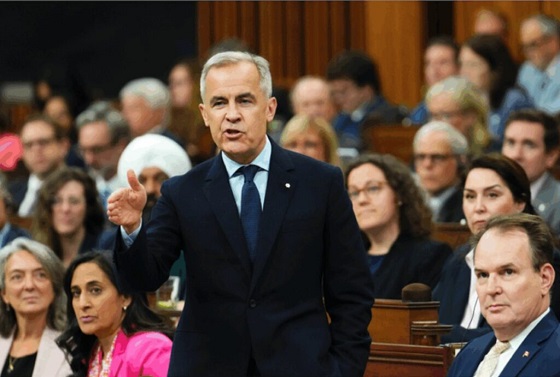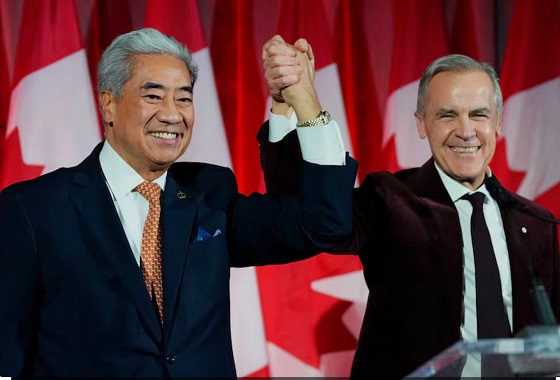Uncategorized
Manhunt in Crimea for possible accomplice in school attack

MOSCOW — Authorities on the Crimean Peninsula were searching for a possible accomplice of the student who carried out a shooting and bomb attack on a vocational school, killing 20 people and wounding more than 50 others, an official said Thursday.
An 18-year-old student, who later killed himself, was initially believed to be the only one to have been involved in the carnage at the Kerch Polytechnic College on Wednesday. Authorities haven’t provided a motive for the shooting, and teachers and classmates described the attacker as a shy man who had few friends.
But Kremlin-appointed Crimean chief Sergei Aksyonov told Russian news agencies on Thursday that it is possible that the attacker, identified as Vyacheslav Roslyakov, had an accomplice.
“The point is to find out who was coaching him for this crime,” he said. “He was acting on his own here, we know that. But this scoundrel could not have prepared this attack on his own, in my opinion and according to my colleagues.”
Residents of the Black Sea city of Kerch brought flowers and toys to a makeshift memorial outside the school on Thursday morning. Many were in tears and struggled to speak.
Russia annexed the Crimean Peninsula from Ukraine in 2014. Wednesday’s attack was by far the worst by a student in Russia, raising questions about school security in the country. The Kerch Polytechnic College had only a front desk with no security guards. Russia’s National Guard said Thursday that it has deployed officers and riot police to all schools and colleges in Kerch in the aftermath of the attack.
The death toll from the shooting climbed by one to 20 on Thursday after one of the wounded died in a hospital, and the first victim will be buried later in the day.
Dozens remain hospitalized in Kerch, and at least 10 people with severe injuries will be airlifted to top Russian hospitals for surgery, Health Minister Veronika Skvortsova said.
Most of the people killed died from gunshot wounds, and those who ended up hospitalized have injuries from a blast from an improvised explosive device that was packed with shrapnel.
“The kids’ muscles have been ‘minced’ with small metal objects,” Skvortsova said. “Those who have their organs ripped apart, we are finding metal balls in kidneys, intestines, in blood vessels. That is how powerful the blast was.”
Skvortsova spoke of the severity of injuries some of the victims have sustained.
“Some people have feet, lower legs missing,” she said.
The school attack in Kerch was the greatest loss of life in school violence in Russia since the Beslan attack by Chechen separatists in 2004, in which 333 people were killed during a three-day siege, many of them children, and hundreds of others were wounded.
Since Crimea’s annexation, Russian authorities have repeatedly warned of a terrorism threat coming from unnamed Ukrainian nationalists as well as ethnic Tatars, an indigenous Crimean people. But despite acts of public defiance and rallies, both groups haven’t been engaged in any violent activities in Crimea.
Russia has fairly strict gun legislation. Civilians can own only hunting rifles and smoothbore shotguns and must undergo significant background checks. Roslyakov had only recently received a permit to own a shotgun and bought 150 cartridges just a few days ago, according to local officials.
Asked about possible plans to further restrict gun ownership in Russia, Kremlin spokesman Dmitry Peskov urged caution and said the government would wait for the results of the investigation.
Nataliya Vasilyeva, The Associated Press
Uncategorized
Cost of bureaucracy balloons 80 per cent in 10 years: Public Accounts

The cost of the bureaucracy increased by $6 billion last year, according to newly released numbers in Public Accounts disclosures. The Canadian Taxpayers Federation is calling on Prime Minister Mark Carney to immediately shrink the bureaucracy.
“The Public Accounts show the cost of the federal bureaucracy is out of control,” said Franco Terrazzano, CTF Federal Director. “Tinkering around the edges won’t cut it, Carney needs to take urgent action to shrink the bloated federal bureaucracy.”
The federal bureaucracy cost taxpayers $71.4 billion in 2024-25, according to the Public Accounts. The cost of the federal bureaucracy increased by $6 billion, or more than nine per cent, over the last year.
The federal bureaucracy cost taxpayers $39.6 billion in 2015-16, according to the Public Accounts. That means the cost of the federal bureaucracy increased 80 per cent over the last 10 years. The government added 99,000 extra bureaucrats between 2015-16 and 2024-25.
Half of Canadians say federal services have gotten worse since 2016, despite the massive increase in the federal bureaucracy, according to a Leger poll.
Not only has the size of the bureaucracy increased, the cost of consultants, contractors and outsourcing has increased as well. The government spent $23.1 billion on “professional and special services” last year, according to the Public Accounts. That’s an 11 per cent increase over the previous year. The government’s spending on professional and special services more than doubled since 2015-16.
“Taxpayers should not be paying way more for in-house government bureaucrats and way more for outside help,” Terrazzano said. “Mere promises to find minor savings in the federal bureaucracy won’t fix Canada’s finances.
“Taxpayers need Carney to take urgent action and significantly cut the number of bureaucrats now.”
Table: Cost of bureaucracy and professional and special services, Public Accounts
| Year | Bureaucracy | Professional and special services |
|
$71,369,677,000 |
$23,145,218,000 |
|
|
$65,326,643,000 |
$20,771,477,000 |
|
|
$56,467,851,000 |
$18,591,373,000 |
|
|
$60,676,243,000 |
$17,511,078,000 |
|
|
$52,984,272,000 |
$14,720,455,000 |
|
|
$46,349,166,000 |
$13,334,341,000 |
|
|
$46,131,628,000 |
$12,940,395,000 |
|
|
$45,262,821,000 |
$12,950,619,000 |
|
|
$38,909,594,000 |
$11,910,257,000 |
|
|
$39,616,656,000 |
$11,082,974,000 |
Uncategorized
Trump Admin Establishing Council To Make Buildings Beautiful Again


From the Daily Caller News Foundation
By Jason Hopkins
The Trump administration is creating a first-of-its-kind task force aimed at ushering in a new “Golden Age” of beautiful infrastructure across the U.S.
The Department of Transportation (DOT) will announce the establishment of the Beautifying Transportation Infrastructure Council (BTIC) on Thursday, the Daily Caller News Foundation exclusively learned. The BTIC seeks to advise Transportation Secretary Sean Duffy on design and policy ideas for key infrastructure projects, including highways, bridges and transit hubs.
“What happened to our country’s proud tradition of building great, big, beautiful things?” Duffy said in a statement shared with the DCNF. “It’s time the design for America’s latest infrastructure projects reflects our nation’s strength, pride, and promise.”
“We’re engaging the best and brightest minds in architectural design and engineering to make beautiful structures that move you and bring about a new Golden Age of Transportation,” Duffy continued.
Mini scoop – here is the DOT’s rollout of its Beautifying Transportation Infrastructure Council, which will be tasked with making our buildings beautiful again. pic.twitter.com/
9iV2xSxdJM — Jason Hopkins (@jasonhopkinsdc) October 23, 2025
The DOT is encouraging nominations of the country’s best architects, urban planners, artists and others to serve on the council, according to the department. While ensuring that efficiency and safety remain a top priority, the BTIC will provide guidance on projects that “enhance” public areas and develop aesthetic performance metrics.
The new council aligns with an executive order signed by President Donald Trump in August 2025 regarding infrastructure. The “Making Federal Architecture Beautiful Again” order calls for federal public buildings in the country to “respect regional architectural heritage” and aims to prevent federal construction projects from using modernist and brutalist architecture styles, instead returning to a classical style.
“The Founders, in line with great societies before them, attached great importance to Federal civic architecture,” Trump’s order stated. “They wanted America’s public buildings to inspire the American people and encourage civic virtue.”
“President George Washington and Secretary of State Thomas Jefferson consciously modeled the most important buildings in Washington, D.C., on the classical architecture of ancient Athens and Rome,” the order continued. “Because of their proven ability to meet these requirements, classical and traditional architecture are preferred modes of architectural design.”
The DOT invested millions in major infrastructure projects since Trump’s return to the White House. Duffy announced in August a $43 million transformation initiative of the New York Penn Station in New York City and in September unveiledmajor progress in the rehabilitation and modernization of Washington Union Station in Washington, D.C.
The BTIC will comprise up to 11 members who will serve two-year terms, with the chance to be reappointed, according to the DOT. The task force will meet biannually. The deadline for nominations will end Nov. 21.
-

 Business1 day ago
Business1 day agoOttawa Pretends To Pivot But Keeps Spending Like Trudeau
-

 Daily Caller2 days ago
Daily Caller2 days agoParis Climate Deal Now Decade-Old Disaster
-

 Energy1 day ago
Energy1 day agoLiberals Twisted Themselves Into Pretzels Over Their Own Pipeline MOU
-

 Censorship Industrial Complex1 day ago
Censorship Industrial Complex1 day agoHow Wikipedia Got Captured: Leftist Editors & Foreign Influence On Internet’s Biggest Source of Info
-

 Indigenous2 days ago
Indigenous2 days agoResidential school burials controversy continues to fuel wave of church arsons, new data suggests
-

 Alberta2 days ago
Alberta2 days agoAlberta’s huge oil sands reserves dwarf U.S. shale
-

 International2 days ago
International2 days agoFBI didn’t think it had cause to raid Trump but DOJ did it anyway
-

 Health2 days ago
Health2 days agoSaskatchewan woman approved for euthanasia urged to seek medical help in Canada rather than US










